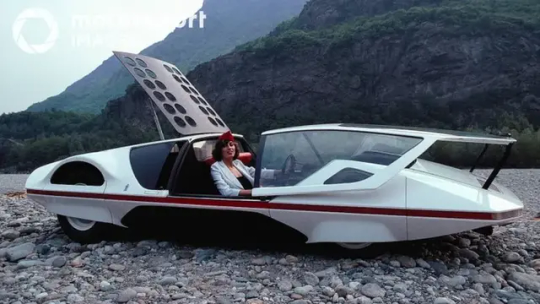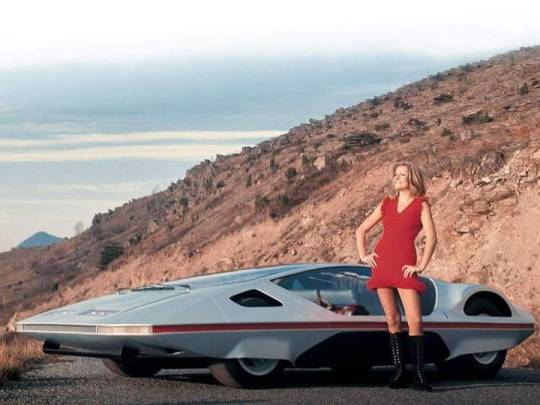#Ferrari Modulo
Explore tagged Tumblr posts
Text


Italian Wedge SilhouetteHistory
Silhouettes of Italian wedge design concept cars from the late '60s and early '70s, including 1969 Autobianchi Runabout, 1970 Lancia Stratos Zero and 1974 Lamborghini Bravo by Bertone, 1969 Fiat-Abarth 2000 Scorpione by Pininfarina, 1968 Alfa Romeo Carabo by Bertone, 1972 Maserati Boomerang by Italdesign and 1970 Ferrari 512 S Modulo by Pininfarina.
This series will available on postcards exclusively for my supporters, who buy me a coffee limited to 50 prints.
Home | Shop | Special Tees | Index | FB | Insta | Newsletter
Buy me a coffee!
#silhouettehistory#ferrari#maserati#alfa romeo#lamborghini#lancia#autobianchi#abarth#fiat#bertone#pininfarina#italdesign#marcello gandini#wedge design#bertone runabout#runabout#lancia stratos zero#stratos#lamborghini bravo#bravo#abarth 2000 scorpione#scorpione#lafa romeo carabo#carabo#maserati boomerang#boomerang#ferrari modulo#modulo#postcard#italiancars
9 notes
·
View notes
Text


Ferrari Modulo. Concept car présenté au Salon de Genève en 1970. Wikipédia
3 notes
·
View notes
Text





1970 Ferrari 512 S Pininfarina Modulo Concept
At the 1970 Geneva Motor Show, Ferrari and Pininfarina stunned the world with the Ferrari 512 S Modulo. Designed by Paolo Martin, this concept sports car showcases a revolutionary wedge-shaped body and a canopy-style glass roof that slides forward for entry.
This 550-horsepower Ferrari V12 can reach a top speed of around 354 km/h (220 mph).
Credits go to @royale77
#concept car#concept#ferrari#pininfarina#modulo#concept cars#future#classic car#classic cars#sports cars#racing#cars#sports car
23 notes
·
View notes
Text







1970 Pininfarina Ferrari 512S Modulo
My tumblr-blogs:
www.tumblr.com/germancarssince1946 & www.tumblr.com/frenchcarssince1946 & www.tumblr.com/englishcarssince1946 & www.tumblr.com/italiancarssince1946 & www.tumblr.com/japanesecarssince1947 & www.tumblr.com/uscarssince1935
48 notes
·
View notes
Video
youtube




40 years ago the future looked like this Fiat Halley, 1985, by Maggiora. Designed by Paolo Martin (whose work includes the Ferrari Modulo) based on the Fiat Uno’s platform. The single volume shape predicted the compact MPV’s that became popular a decade later though the Halley’s 3 door configuration limited its practicality. The Halley was named after the comet which was visible from Earth in 1986
#Fiat#Fiat Halley#Paulo Martin#Maggiora#concept#design study#monobox#futuristic#1985#40 years ago#videa#Fiat Uno#Halley's Comet#MPV#youtube
202 notes
·
View notes
Text

Ferrari 512 S Modulo 1970. - source Amazing Classic Cars.
141 notes
·
View notes
Photo

Ferrari 512S Modulo, Pininfarina, Paolo Martin, 1970
290 notes
·
View notes
Photo

1970 Ferrari modulo concept
170 notes
·
View notes
Text
The Bertone styling house is probably the most influential in creating what a 'supercar' looks like. The late '60s and early '70s was the golden era of the wedge-shaped one-of-one concept car and one of the pinnacles of the paradigm, in my view, is this: Marcello Gandini's space-age concept, the Lancia Stratos HF Zero, named to evoke the edge of the stratosphere, the border of space.

This is the very extreme of car design, way beyond utility and into art. When it was first shown, this car was a metalflake copper orange, and was intended to appear carved from a single block of bronze (note the lack of panel seams visible anywhere) but was later resprayed silver. This car is, it must be acknowledged, ludicrous; it's actually hard to fully take in without comparing it to known things like people or other cars because its form is so different. Here are some charming period shots of the car alongside a Lockheed F-104 Starfighter and an apparent cowgirl aviator who's just finished her bombing run and is keen to get home in her Stratos Zero:




The Ford GT40 is so named because it's only 40 inches tall, a fact that clearly made a big impression for that to be the origin of it's name; the Stratos Zero is 33.3 inches tall, due to the remit given to Gandini being to make the lowest possible car, and the occupants (there is a passenger seat) essentially lie down to drive, like luge riders, sliding into the oncoming world feet first.

The windscreen is the door and hinges open at the top like a glazed trapdoor, allowing the steering column to hinge forward on hydraulics. You step inside and duck under the roof sill as you recline on the chocolate bar-like seats. The black panels to the rear of the front wheels are the side windows, allowing you to see the ankles of pedestrians and wheel nuts of other traffic in perfect detail, along with the wing mirrors housed inside the front wheel arches.


While cars like this would become the main application of the pop-up headlight, this doesn't have them. Instead there are ten small lights across the slot on the front, and the rear lights house 80+ tiny red bulbs (well before the advent of LEDs, after all). The car is in fact the first use of sequential indicators, opting to animate the front and rear lights instead of using anything as vulgar as orange indictor lights.

Few concepts before this were this extreme yet functional. Bertone showed the Alfa Romeo Carabo in 1968, and the month before this was shown, Pininfarina displayed the almost equally spacecraft-like Ferrari 512 S Modulo. This car is built from the crashed remains of a Lancia Fulvia Coupé 1.6 HF rally car, the modest (113hp) but rally-tuned 1.6L V4 engine housed beneath the side-hinged triangular louvres, and was constructed without Lancia's knowledge. A couple of months prior to the reveal, Nuccio Bertone came clean to Lancia and asked to put a Lancia badge on what his firm had built. Lancia wanted to see it, so he drove it through Milan, which looked like this:

As I heard it, the gate guard at Lancia was only aware Bertone had arrived when he drove under the barrier, not bothering to sign in. It's the kind of car where these possibly apocryphal stories are made plausible by the implausibility of the car itself; if impossibilities like this could be real, who knows what can happen? In a way the point of one-off concepts like this is to make us dream, push us to imagine better futures where cars like this roam the streets. It certainly pushed Lancia, who observed the buzz around this car and commissioned Bertone to co-build with them a car to replace the Fulvia Coupé that would improve on the Fulvia's already impressive rally record.

That, Bertone did, and even retained the name; a straight line exists between this car and Lancia's legendary status in rallying. The Stratos HF prototype was first shown in 1971, entered production in 1973 and was homologated for rally in 1974, winning the rally chamionship for three years running until internal politics at the FIAT group meant factory support for Lancia rallying was pulled.

The Stratos Zero also caught Lamborghini's eye, and Gandini was hired to design a successor for the Miura. Along with the wedge profile, the early Countach shared the upswept cowling on the rear wheel and the chocolate-bar seats, and the flat, extremely-pitched windscreen, although Gandini reused the scissor doors from the Carabo rather than retaining the hatch-like door/window.

I've been waiting for this model for about 30 years. It appeared in a favourite book of mine in its silver guise, and compared to the copper orange I think it's immeasurably better looking, even if that's its original look. When the recent Hammer Drop series debuted the casting in orange I was disappointed, but luckily I was able to find this silver version from the Marcello Gandini two-pack on its own on ebay for barely over the price of a single car (I already had the red Countach 5000QV from the Jay Leno series, naturally). I understand the Stratos Zero is kind of unpopular compared to other cars in that series, but the only reason I can imagine is that people perhaps understandably don't realise it's not a fantasy car, or at least not entirely. I think it's a stretch to call it fully real either.
#diecast#model cars#hot wheels#bertone#marcello gandini#concept car#lancia#stratos HF zero#the one in Moonwalker was a replica based on a Fiat X-1/9
4 notes
·
View notes
Text

“Your first car was a 1998 Beetle? Nice. Mine was a 1970 Ferrari Modulo.”
— Me (at the Hot Wheels collectors’ show)
2 notes
·
View notes
Text
0 notes
Text

Ferrari Babes in Mexico City. Ferrari 512S Modulo - 1970 before the Palacio del Deporte. Architect: Felix Candela,1968
0 notes
Text
Resultados do Super GT Okayama

GT500
1-36-Sho Tsuboi\Kenta Yamashita-Toyota GR Supra GT500-au Tom's -82 Laps
2-39-Yuki Sekiguchi\Yuichi Nakayama-Toyota GR Supra GT500-Denso Kebelco Sard
3-100-Naoki Yamamoto\Tadasuki Makino-Honda Civic Type R GT500-Stanley
4-38-Hiroaki Ishiura\Toshiki Oky-Toyota GR Supra GT500-Keeper Cerumo
5-23-Katsumassa Chiyo\Ronnie Quintarelli-Nissan Z GT500-Motul Autech Z
6-3-Mitsunori Takaboshi\Atsushi Miyake-Nissan Z GT500-Niterra Motul Z
7-37-Ukyo Sashara\Giuliano Alesi-Toyota GR Supra GT500-au Tom's
8-8-Tamoki Nojiri\Nobuharu Matsushita-Honda Civic Type R GT500-ARTA Mugen
9-16-Hiroki Otsu\Ren Sato-Honda Civic Type R GT500-ARTA Mugen
10-64-Takuya Izawa\Riki Okusa-Honda Civic Type R GT500-Modulo +1 Lap
GT300
1-2-Yuui Tsutsumi\Hibini Taira-Toyota GR86 GT300-Muta Racing-77 Laps
2-65-Naoya Gamou\Takura Shinohara-Mercedes-AMG GT3-LEON PYRAMID AMG
3-7-Seiji Aara\Niklas Krutten-BMW M4 GT3-BMW Team Studie
4-52-Hiroki Yoshida\Seita Nonaka-Toyota GR Supra GT300-Green Brave
5-31-Kazuto Kotaka\Jin Nakamura-Lexus LC 500 h-APR- +1 Lap
6-96-Morio Nitta\Shinichi Takagi-Lexus RC F GT3-K-tunes +1 Lap
7-87-Kosuke Matsuura\Natsu Sakaguchi-Lamborghini Huracan GT3-Metalive +1 Lap
8-88-Takashi Kogure\Yuya Motojima-Lamborghini Huracan GT3-JLOC +1 Lap
9-4-Nobutero Taniguchi\Tatsuya Kataoka-Mercedes AMG GT3-GOODSMILE Hatsune +1 Lap
10-6-Yoshiaki Katayama\Roberto Hermi-Ferrari 296 GT3-Uni Robo Bluegrass +1 Lap
1 note
·
View note
Text

Ferrari Modulo 512 concept car designed by Carrozzeria Pininfarina (1970)
0 notes
Text
Bad news for everybody everywhere: Programmers often hold a mirror version of that exact same resentment towards softer subjects.
If I could understand why the current mindset is to imagine an unsuccessful artist and a successful engineer and then to try to decide which one is the bad guy I'd be able to crack open all of pop culture and politics.
Our wagons wheels have fallen right into the perfectly spaced ruts, but bad news, this road doesn't go anywhere. Perhaps by using that amazing piece of STEMlord technology, the lever, we can pull ourselves out and blaze a new trail.
@phaeton-flier
"And, while I will not pretend the differences in pay Software Engineers get is just and unquestionable, the reason they get so many more positions is that there's just more demand for software than there is art, relative to the number of people who want to be software engineers and artists,"
No, this is not quite right. You aren't comparing people who want to be programmers with people who want to be artists; you are comparing people who are programmers with people who want to be artists.
Society can also support only a limited number of engineers; the marginal engineer is not as needed as another cook, truck driver, miner, etc. but somehow this doesn't cash out to "Either capital throws scraps to engineers or a small elite get to be engineers and gate-keep the rest."
I'm actually fairly certain that the supply of people who want to work at, let's say, Google is quite high relative to Google's demand for programmers, but Google doesn't actually have demand for most of them. The number of people who Google actually wants to hire is low compared to Google's hiring demands, so Google engineers command high salaries (Modulo Google's demonstrated collusion with other tech companies to depress wages of course)
Compare: The number of people who want to be Jeff Koons is very high compared to the demand for gargantuan aluminum balloon animals; the number of people who are Jeff Koons is low compared to the demand for gargantuan aluminum balloon animals, so Koons commands incredible sums of money, even compared to most engineers.
So why is your archetypal artist the wannabe and your archetypal programmer the highly-paid engineer? Why not compare the multi-millionaire artist or film star to the guy who washed out of college while trying to get a computer science degree and works at McDonalds?
No, seriously, I am asking, this seems like a crucially important question that I do not know the answer to.
As a number of surly people have pointed out to me, in the market demand for a good is demand for a good at a certain price. Maybe you aren't in the market for a Ferrari now, but what if I offered to sell you a brand new one for ten bucks?
AI art (And programming) is likely to increase the demand for certain images, because the cost of producing those images will go down. People who have no demand for something at a cost of $50 might be happy to buy it at $10.
Unfortunately, if you sell your labor, rather than owning capital, you are in a very bad position to exploit the increase in demand that attends decrease in cost due to high supply.
If you make widgets in a widget factory and the price of widgets goes down, you can arbitrarily increase the number of widgets you make; if you provide man-hours of labor, and the price at which you sell a man-hour of labor goes down, you can't just produce arbitrarily more man-hours to compensate; there is a very low upper limit to the number you can provide.
My point is, what happens when all labor becomes low-skilled labor because AI makes it possible for anybody to make an image, or a computer program, or pilot a plane? Because all labor cashes out to "Tell the AI what it ought to do"?
How is this not seen as a giant fucking looming crisis for the capitalist economic system?
Pointing out that impoverished commie societies are unable to support a large number of artists, or even that society in general is limited in the number of artists it can support relative to fry cooks is pretty much entirely a non-sequitur given the actual dynamics at work and the actual threat.
While I really hate the narrative of "tech bros" because of how it conflates shitty CEOs with non-shitty base-level programmers, and how it conflates Dunning-Kruger-y early adopters with people who Know Their Shit about computers...
...On the AI art issue, I will say, there is probably a legit a culture clash between people who primarily specialize in programming and people who primarily specialize in art.
Because, like, while in the experience of modern working illustrators a free commons has ended up representing a Hobbseyan experience of "a war of all against all" that's a constant threat to making a living, in software from what I can tell it's kinda been the reverse.
IE, freedom of access to shared code/information has kinda been seen as A Vital Thing wrt people's abilities to do their job at a core level. So, naturally, there's going to be some very different reactions to the morality of scraped data online.
And, it's probably the same reason that a lot of the creative commons movement came from the free software movement.
And while I agree a lot with the core principles of these movements, it's also probably unfortunately why they so often come off as tone-deaf and haven't really made that proper breakthrough wrt fighting against copyright bloat.
It also really doesn't help that, in terms of treatment by capital, for most of our lives programmers have been Mother's Special Little Boy whereas artists (especially online independent artists post '08 crash) have been treated as The Ratboy We Keep In The Basement And Throw Scraps To.
So, it make sense the latter would have resentment wrt the former...
2K notes
·
View notes
